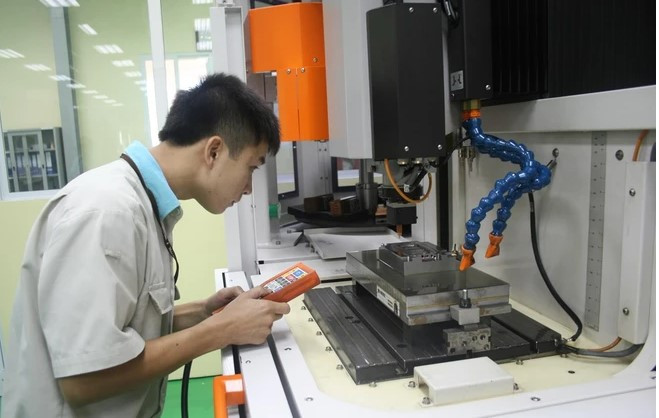Hanoi (VNA) - Assessing Vietnam's monetary policy, HSBC experts expect the State Bank of Vietnam (SBV) will keep the policy interest rate unchanged at 4.5% throughout 2024.
The HSBC bank on January 11 released its “Vietnam At A Glance” entitled “If winter comes, can spring be far behind?” in which, economists acknowledged that Vietnam is experiencing better growth prospects in the near future, however, risks still need to be closely observed.
HSBC experts asserted that the Year of the Cat was not easy for Vietnam. Despite the rough waters, Vietnam ended 2023 relatively optimistic that 2024 is likely to be the year that Vietnam emerges strongly from mounting challenges.
Vietnam’s gross domestic product (GDP) in the fourth quarter (Q4) of 2023 expanded 6.7% year on year, bringing full-year growth to 5.1% in 2023. This is in line with HSBC’s forecast of 5.0%, which we have maintained since July 2023, which largely beat market expectations of 4.6%.
The manufacturing sector, one of Vietnam’s key growth engines, saw a notable improvement in the last half year of 2023 from extreme sluggishness in the first six months. Despite moderating significantly from its historical average, and even slower than during the pandemic, manufacturing has shown positive signs of recovery. This is particularly evident in the electronics sector.
Indeed, the turn in the tech cycle has been quietly driving the recovery in Vietnam’s exports. After falling by double-digits in the first six months of 2023, Vietnam has finally seen its exports grow close to double digits again in Q4, 2023 largely led by rising electronics shipments. Its computer shipments took the first lead in the recovery in Q3, 2023 followed by phone exports.
Apart from an improving manufacturing sector, Vietnam’s robust services continue to provide much-needed support to the economy. The sector expanded over 7% year on year in Q4, mostly led by tourism-related sectors, including retail sales, transport, and accommodation. As the northern hemisphere has entered winter, a significant number of tourists have flocked to Vietnam’s rich heritage sites, from the spectacular Ha Long Bay to the ancient town of Hoi An. The country is now leading ASEAN with a recovery rate of 80% of 2019’s level.
However, experts also suggested that Vietnam need to put more effort is needed to attract Chinese tourists, who were once the largest source with 30% share. However, Vietnam is facing an intense race as regional peers are also vying for these Chinese tourists. Thailand and Malaysia have both implemented visa-free schemes for Chinese tourists since Q4/2023, while Singapore has announced a similar scheme with details to be unveiled in the new year.
According to HSBC, 2024 is expected to bring more hopes and opportunities for Vietnam. The most important factor is the added capacity in trade from sustained FDI inflows, which provides hope for its external sector when the trade cycle turns. While the trade cycle is mostly a near-term consideration, FDI reflects the medium- to long-term confidence of investors.
Vietnam has been widely regarded as the main beneficiary of US-China trade tensions, a trend that continues to hold. Both total and new FDI reached close to their respective historical highs in 2023, particularly with greenfield FDI jumping to a four-year-high of 5% of GDP. Notably, new manufacturing FDI soared to a new high of more than 15 billion USD, 80% of which is concentrated in the manufacturing space. This continues to put Vietnam in a leading position in ASEAN, just behind Malaysia.
Looking at the source of FDI, Japan and the Republic of Korea are both traditionally big investors in Vietnam, but China has been expanding its FDI footprint quickly in Vietnam. In fact, 2023 marks the first time that mainland China (including Taiwan, Hong Kong and Macau) has the largest share among investors. Combined, Greater China accounted for almost half of Vietnam’s new FDI inflows in 2023.
Not surprisingly, the lion’s share went to electronics, a sector that Vietnam is fast becoming a rising star in. This is also an area where FDI inflows are more diversified, a reflection of Vietnam’s increasing significance in the global tech supply chain. Outside of electronics, investors are increasingly being drawn to Vietnam’s promising consumer market, a trend heralded by Japanese corporates.
All in all, experts believe Vietnam is on track for recovery, likely returning to its trend growth of 6.0% in 2024. As FDI inflows continue to add production capacity, Vietnam’s manufacturing sector is experiencing the green shoots of a rebound, bringing opportunities for its exports. While it is key to watch how the minimum 15% corporate tax rate evolves, the impact should be manageable./.






























